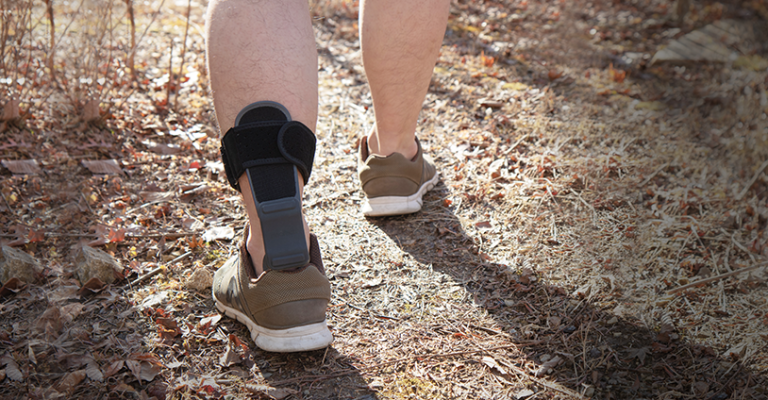
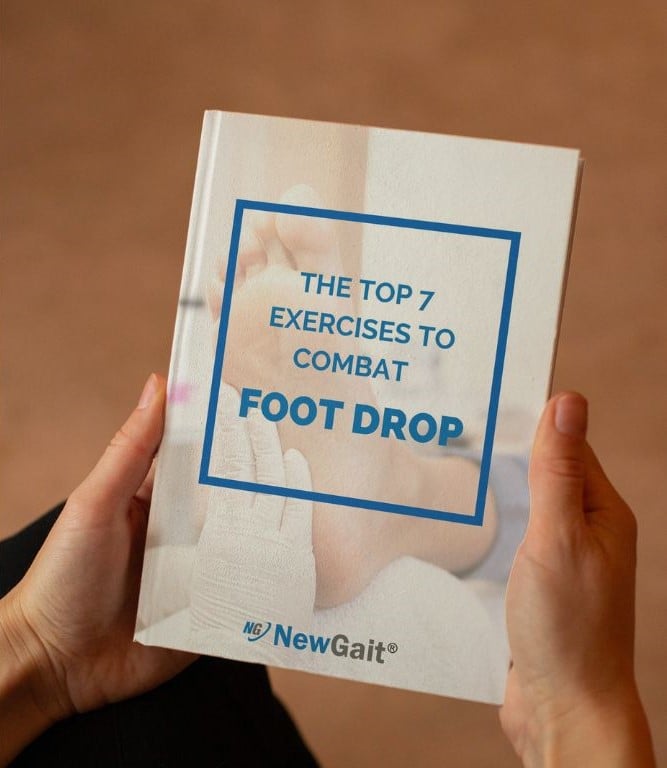
Enter your email below to get our free ebook on the Top 7 Exercises to Combat Foot Drop. You'll learn simple exercises to strengthen your muscles, improve balance, and reduce symptoms.
Thanks for signing up for our free ebook on the Top 7 Exercises to Combat Foot Drop! We've sent the download link to your email address, so check your inbox (and spam folder, just in case) to access it.
We hope our ebook is helpful for you in managing your foot drop symptoms. And if you're interested in our foot drop products, feel free to browse our website for more information.
Best regards,
NewGait
When it comes to mobility and independence, our feet play a crucial role. However, foot drop, a condition that causes weakness or paralysis of the muscles in lifting the front part of the foot, can significantly impact our ability to walk and perform daily activities. Fortunately, an Ankle-Foot Orthosis (AFO) brace offers a solution by providing support, stability, and improved gait for individuals with foot drop.
But finding the perfect fit for an AFO brace can be daunting. In this blog post, we will guide you through finding the ideal AFO brace for your needs. We’ll provide you with essential information to ensure that you find the perfect AFO brace that maximizes mobility and enhances your quality of life.
Let’s embark on this journey to discover how to regain control and confidence in your steps with the right AFO brace for foot drop.
Foot drop is a medical condition characterized by difficulty or inability to lift the front part of the foot, leading to an abnormal gait and potential tripping hazards. It is often caused by underlying nerve or muscle damage, such as nerve compression, muscular dystrophy, stroke, multiple sclerosis, or injury to the spinal cord. Foot drop can result in dragging the foot along the ground or compensatory movements like lifting the leg to clear the foot.
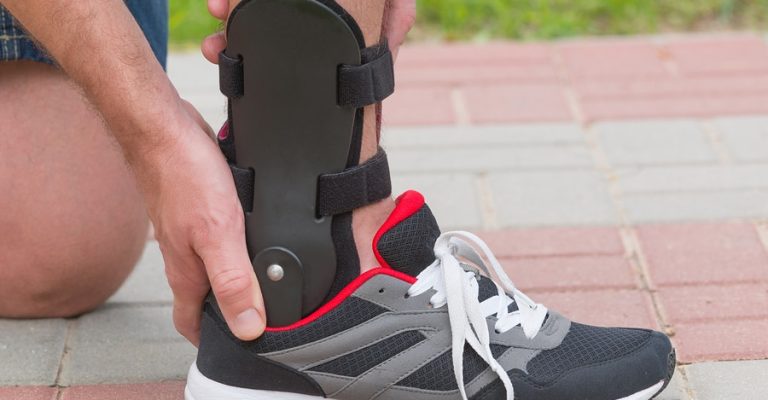
Foot Drop can occur due to various underlying medical conditions or injuries affecting the leg and foot’s nerves, muscles, or bones. The signs and symptoms of foot drop may include:
Difficulty lifting the front part of the foot: The primary symptom of foot drop is an inability to dorsiflex the foot, which means raising the foot and toes upward towards the shin.
Foot dragging or slapping: When walking, a person with foot drop may have an obvious dragging or slapping gait due to the foot not being lifted high enough to clear the ground.
Tripping or stumbling: The foot may catch on the ground or objects, leading to frequent tripping or stumbling while walking.
High-stepping gait: To compensate for the dropped foot, individuals may lift the knee excessively high or swing the leg outward exaggeratedly while walking.
Weakness in the lower leg or ankle: There may be a noticeable weakness in the muscles of the lower leg and ankle, making it challenging to control foot movements.
Numbness or tingling: Some individuals may experience numbness or tingling in the foot or toes, which can accompany foot drop in some instances.
Muscle atrophy: Prolonged foot drop can lead to muscle wasting or atrophy in the lower leg, particularly in the muscles responsible for foot dorsiflexion.
Difficulty with balance and coordination: Foot drop can affect overall balance and coordination, as compensatory movements may be required to maintain stability while walking.
Foot drop occurs in around 20% of people who survive a stroke. If you have this issue, your foot may “drop” or drag as you walk because you have trouble dorsiflexing. When people walk, their brains often tell their muscles to avoid letting their toes dangle. Injuries to the brain or spinal cord may interrupt the signals that typically send signals to the muscles, leading to foot drop.
A significant safety issue might arise from a lack of toe-lifting capacity. If your toes are dragging, you can trip over a rug or a fissure in the pavement. In addition, numbness of the afflicted foot is a common symptom of foot drop. This makes it more likely that they might trip and tumble if they walk on rough ground.
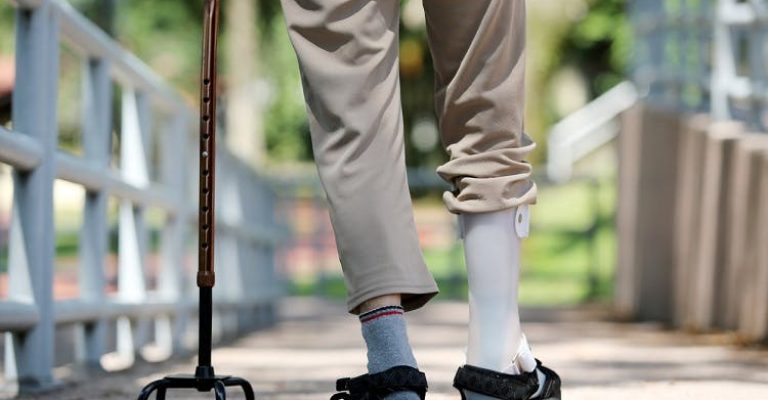
Some people with foot drop prefer to keep from tripping their toes by swinging that affected limb out to the left with each stride. Some people do this by extending their legs in a walking motion to get their foot off the floor.
Changing to a new walking style is not likely to aid in rehabilitation from foot drop, and it does little to fix the underlying source of the condition. The flip side is that they may lead to even more severe side effects, such as persistent pain and increased exhaustion.
For this reason, if your child has foot drop, your doctor or therapist may recommend an AFO brace—ankle foot orthoses aid in stabilizing the foot and preventing the toes from dragging. You’ll feel more secure on your feet and won’t have to worry about developing unnatural gait patterns. This allows people with foot drops to go about more comfortably and effectively.
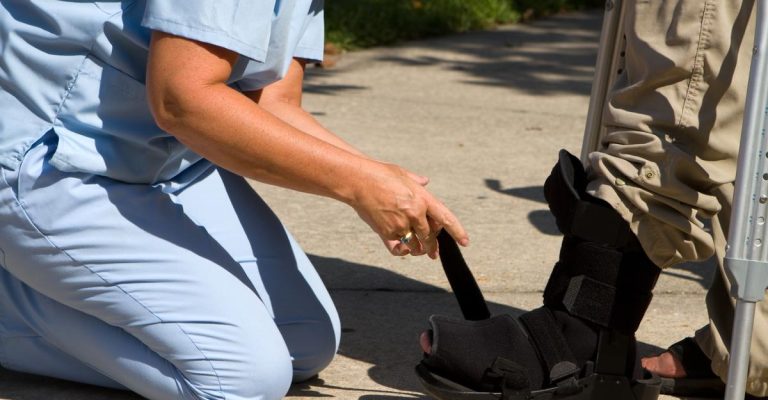
When choosing an ankle-foot orthosis (AFO) brace for foot drop, it’s essential to consider several factors to ensure the brace meets your specific needs. Here are some key aspects to look for:
The brace should fit properly and be comfortable for extended periods. Look for adjustable straps or sizing options to achieve a customized fit. Padding and cushioning in critical areas can enhance comfort and prevent irritation or pressure points.
The AFO brace should offer sufficient rigidity and support to hold the foot in a dorsiflexed position. It should effectively prevent foot drop and allow for proper clearance of the toes during the swing phase of walking. The level of rigidity required may vary depending on the severity of foot drop and individual preferences.
Consider the material of the brace. It should be sturdy and durable to withstand regular use and provide long-lasting support. Common materials used in AFO braces include plastic, carbon fiber, or a combination of both. The choice of material may depend on weight, durability, and flexibility.
Look for an AFO brace that allows for an appropriate range of motion at the ankle joint. It should facilitate natural movement while providing the necessary support. Additionally, consider whether the brace offers adjustability to accommodate swelling, muscle tone, or foot size changes over time.
Proper ventilation and moisture-wicking properties are essential to keep the foot dry and comfortable. Look for AFO braces with breathable materials or features promoting airflow and reducing skin irritation or bacterial growth risk.
The AFO brace should be easy to put on and take off independently or with minimal assistance. Consider features such as fasteners, straps, or closures that are user-friendly and secure.
Ensure the AFO brace is compatible with your regular footwear. It should fit comfortably inside your shoes without causing excessive pressure or discomfort. Some AFO braces are designed to be worn with specific types of shoes, so consider your footwear options when choosing a brace.
Using a foot drop brace long-term can have some drawbacks and considerations. Here are a few disadvantages:
Relying on a foot drop brace for an extended period may result in muscle weakness and atrophy. Since the brace provides external support to lift the foot, the muscles responsible for dorsiflexion (lifting the foot) may become underutilized and weaken over time.
Long-term use of a foot drop brace can lead to dependence, where the individual becomes reliant on the brace for walking or performing daily activities. This can hinder the affected muscles and nerves’ natural recovery and rehabilitation process.
Foot drop braces often provide rigid support and may limit the natural range of motion of the foot and ankle. Prolonged use of such braces can reduce sensory feedback from the foot, which is important for balance, proprioception, and detecting ground surfaces. Reduced sensation may increase the risk of falls and accidents.
Continuous use of a foot drop brace can cause skin irritation, pressure points, or even pressure sores, especially if the brace is ill-fitting or not correctly adjusted. It is essential to regularly monitor the skin’s condition and make necessary adjustments to prevent discomfort or skin damage.
Long-term use of a foot drop brace may psychologically affect the wearer. It can constantly remind them of their condition, potentially leading to frustration, self-consciousness, or decreased self-esteem.
Wearing a foot drop brace constantly can be inconvenient in certain situations. It may limit the choice of footwear and require extra time and effort to put on and take off. Activities such as swimming or showering may be challenging with the brace.
An AFO brace is often a crucial defense stage when a patient presents with foot drop. While an AFO may be helpful, it is meant to be a short-term safety measure and not a long-term solution.
As part of a comprehensive physical therapy program for your whole body, you should immediately begin doing foot drop exercises. Optimal neuroplasticity and subsequent foot and ankle recovery will result from this. Neuroplasticity allows you to reduce reliance on an AFO as your progress continues gradually.